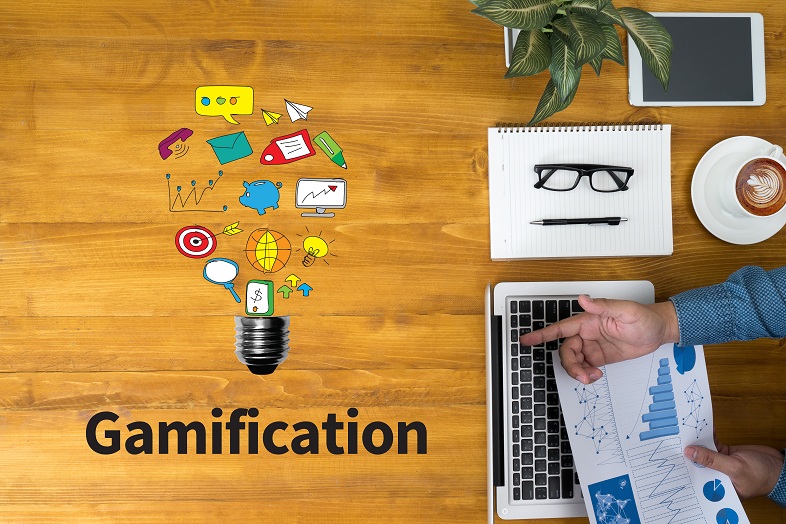Gamification in Marketing Strategy

An educationist designed the technique of gamification to motivate students and helping to make learning more enjoyable. Gamification can also be employed in the business for consistent professional development, and most importantly, for training.
Gamification in business can also be used as a marketing strategy – to interact, to motivate, and to reward customers using a game-style mechanism.
Specific elements of game design should be understood before creating a gamified marketing strategy. Some of the items include points, ranking, trophies, scoreboards, avatars, storytelling, and competitions. Effective and right adoption of these strategies can motivate customers to participate and be consistent in playing.
Want to make gamification a part of your marketing strategy? Use these branded games and playable promotions to attract your targeted audience.
Benefits of Gamification for Your Marketing Strategy
The use of gamification enhances your marketing strategy. You can enjoy the following benefits when you use gamification;
- Gamification Attracts New Prospects with Content
Games and puzzles have been a means of entertainment for a long time. Solving easy challenges like puzzles, paper games, riddles, word searches, questions, puzzles, and memory games excites many people. Please take advantage of your followers’ interest when they spend their free time online or on social media.
- Boosting Brand Awareness with Fully Branded Campaign
Gamified promotion always gets people’s attention. It can subtly improve brand awareness when products, branding, and logo are arranged in a way that blends with your campaign. The campaign logo, color, and font should be edited to match your style. It will be easy for everyone that interacts with the campaign to notice your brand.
- Convert More Leads Through Interactive Campaign
Modern consumers reward brands that offer interactive and personalized experiences instead of one-way or conventional ads. Compared to the 36% conversion rate of passive and one-way content, interactive content like apps, surveys, quizzes, product reminders, and games has been proven by Demand Metric Survey to have a conversion rate of 70%.
- Gamification Can Help Increase Dwell Time, Views, And Interaction
The difficulty level and competition among users in your promotion can increase participants’ dwell time. It keeps them coming back for more. Extra incentives like points, prizes, and scoreboard can also motivate the audience to play more.
- Access to Contact Details to Follow Up Leads
The right campaign with gamification can motivate your audience to share their contact information with you. You can offer a price for the winner and demand that the registration form must be completed. However, the participants’ data must be collected in line with the General Data Protection Regulation, then follow up via email.
Three Popular Apps for Gamification
The following are three best apps to use to gamify your market strategy;
- Game Apps
Offering games such as puzzles and memory challenges instead of displaying static ads can capture audience attention. It enhances the engagement of viewers and makes them more aware of the brand.
- Quiz Apps
Entertain and educate your audience through quizzes, surveys, personality tests, predictions, and product recommendations. It will encourage participants from a wide range and increase your brand impression and reputation.
- Contest Apps
A more playful and interactive relationship with consumers can be developed through contests. Challenge them to display their creativity, collect user-generated data, and therefore, turn customers into your brand ambassadors.
Conclusion
Adopting gamified marketing strategies can increase your brand awareness. It also encourages your audience to visit your campaign consistently.